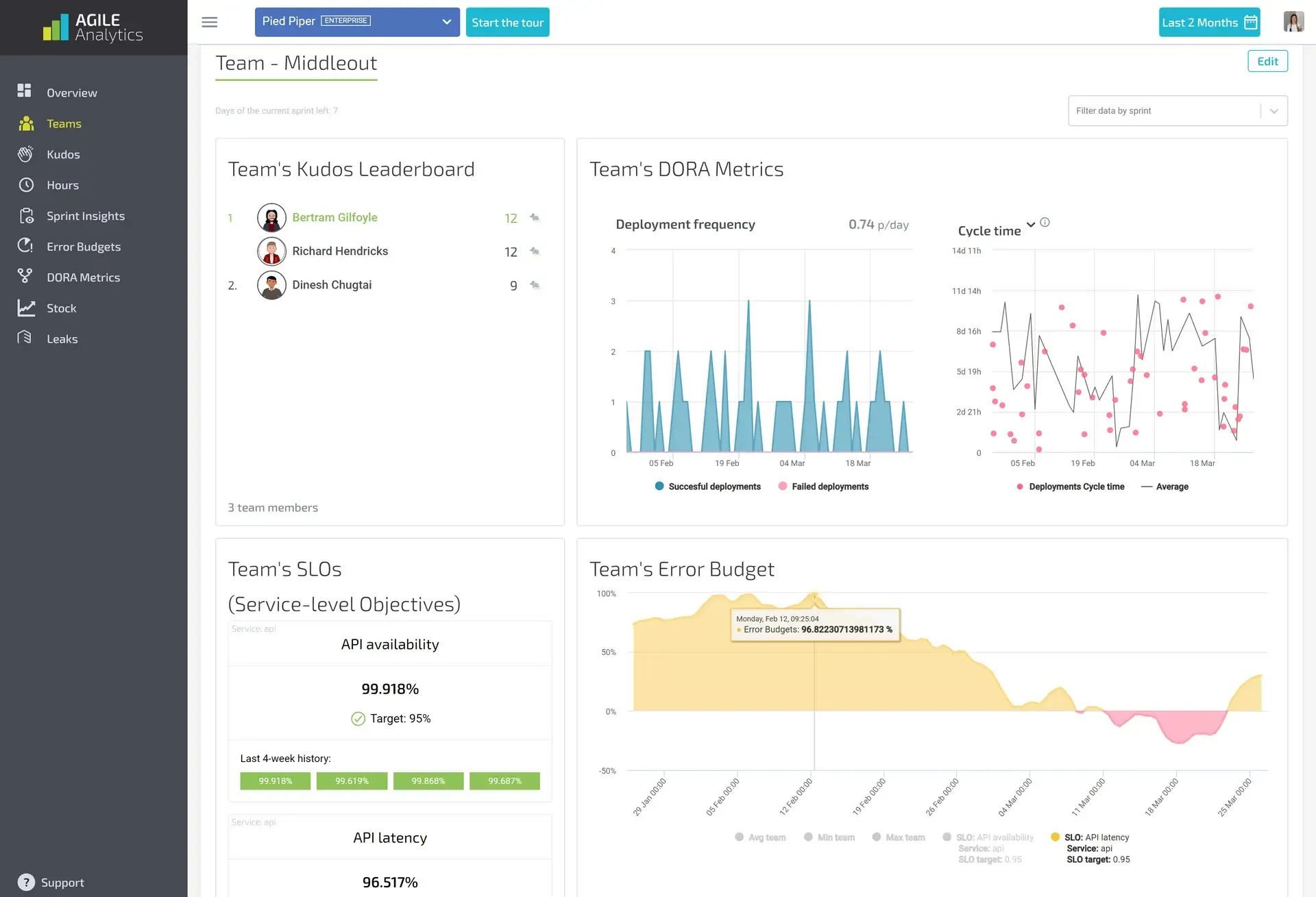Don't Let Summer Slow Your Sprints: Essential Agile Methodology Tips

Published on 7 August 2025 by Zoia Baletska

Summer months bring a big problem to Agile methodology as productivity drops by up to 20%. Most families plan their vacations during this time - 56% of Europeans and 68% of Americans. Project deadlines don't pause because of sunny weather, and teams shouldn't choose between taking breaks and meeting targets.
Teams break apart during vacation schedules, and the heat makes everyone less energetic. The good news is that you can keep your Agile project management on track. Smart tracking of team absences works better than just noting down vacation days. This helps prepare your agile scrum methodology for seasonal shifts. Your team's productivity doesn't need to crash during summer. Our Agile Analytics platform spots workflow problems quickly. It connects team feedback with metrics to boost output and job satisfaction, giving you applicable information.
This piece will show you the quickest ways to keep your agile methodology running smoothly through the summer slowdown. Your projects will stay on course even when the core team members take off mid-project.
Prepare Your Agile Sprints for Summer
Summer brings special challenges when teams implement agile methodology. Setting quarterly goals works better than yearly targets that get stale, especially when team members take vacations.
Teams should think about using shorter sprint cycles. Most teams stick to two-week sprints, but one-week sprints in summer can build momentum and reduce scope creep risks. Quick iterations lead to faster feedback and minimise problems when team members take time off.
Smart capacity planning helps track the available working days. A six-person team that usually delivers 40 story points per sprint should adjust its projected velocity to 32-33 points when two people go on vacation[1]. Our Agile Analytics platform tracks these metrics and connects speed data with team feedback to spot bottlenecks early.
The success of agile scrum methodology depends on clear sprint goals, even with changing attendance. Teams need a solid "Definition of Done" that stays the same through summer. Company events and individual schedules affect capacity planning.

Running summer projects like a product launch with agile project management methodology lets everyone contribute while staying flexible. Success comes from finding the right mix of structure and adaptability.
Stay Flexible Without Losing Focus
Agile methodology requires more than just random work arrangements to achieve true flexibility. Teams achieve real autonomy by operating within a well-laid-out structure that keeps everyone connected rather than isolated in silos.
Authentic agile project management methodology lets teams adapt to changing market and worker needs immediately, unlike traditional "off-the-shelf" flexible solutions. Teams can make quick decisions without waiting for instructions from above.
Digital boundaries play a crucial role in maintaining the balance between flexibility and focus. Statistics show approximately 4 million adults in the UK have flexi-time arrangements, and 40% work from home at least weekly[2]. Notwithstanding that, unclear connectivity rules can negatively affect both well-being and efficiency.
Our Agile Analytics platform bridges the gap between autonomy and alignment by connecting metrics like lead time with qualitative team feedback. This helps you spot meaningful correlations between team satisfaction and operational reliability.

Teams can implement agile scrum methodology effectively by adopting asynchronous collaboration. Team members can process information at their own pace, which results in more thoughtful contributions. Asynchronous tools help employees participate with their team on their schedule, improving time management significantly.
High autonomy becomes effective only with trust. Leaders should create environments where teams take ownership of their work without needing constant approvals.
Handle Mid-Sprint Disruptions Effectively
Unexpected disruptions can affect even the best-planned sprints. Teams in the agile methodology world should add a buffer of 5-10% sprint capacity when they face frequent interruptions[3]. This buffer helps them keep their momentum going.
Teams must track how much buffer they use to make effective decisions. Your product owner should strictly control changes if you've used 80% of your buffer halfway through a ten-day sprint. The team has more room to adapt when they've only used 20% at the midpoint.

Task prioritisation becomes crucial as unplanned work surfaces. Our Agile Analytics platform helps teams handle these situations by linking metrics like lead time with team feedback. This connection shows how team satisfaction relates to operational reliability. Teams can use these analytical insights to make targeted improvements that appeal to everyone.
Teams can use these prioritisation techniques to implement agile scrum methodology effectively:
-
The Eisenhower Matrix categorises tasks by urgency and importance
-
Stakeholders give numerical values to features using the Fibonacci sequence
-
Timeboxing protects teams from getting stuck in unexpected work
Your team should make decisions without lengthy approval procedures. Clear communication with stakeholders about timeline effects will keep your agile project management methodology strong during seasonal disruptions.
Conclusion
Summer months bring unique challenges to agile teams, but they shouldn't stop your project's momentum. Your teams can handle seasonal disruptions by adapting sprint cycles, planning capacity thoroughly, and keeping clear goals despite changing attendance.
Teams need a balance of flexibility and focus during these times. They work best with structured independence instead of total freedom, especially when vacation schedules affect availability. Team members can contribute meaningfully through asynchronous collaboration tools, no matter their working hours or locations.
Careful planning won't stop all disruptions. Teams can manage unplanned work without derailing sprint goals by adding buffer capacity and using prioritisation techniques like the Eisenhower Matrix. Everyone stays in line when there's trust and open communication with stakeholders about timeline changes.
The Agile Analytics platform tackles these summer challenges by connecting numbers with team feedback. This shows important links between team satisfaction and operational reliability that turn into targeted improvements. You'll spot potential bottlenecks before they affect delivery, keeping your agile methodology smooth whatever the seasonal disruptions.
Summer isn't about choosing between well-deserved vacations and project success. It's a chance to make your agile practices stronger and more flexible. Agile methodology's core principle focuses on handling change effectively—and summer is the perfect time to prove this skill.
Supercharge your Software Delivery!
Implement DevOps with Agile Analytics
Implement Site Reliability with Agile Analytics
Implement Service Level Objectives with Agile Analytics
Implement DORA Metrics with Agile Analytics





